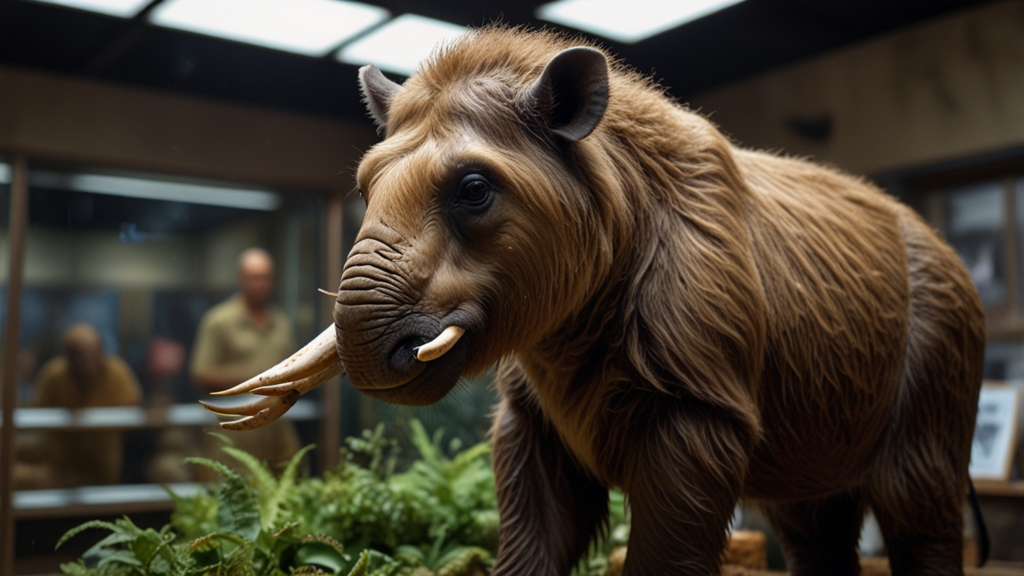The Mammal Emporium: A Display of Nature's Creative Genius
When we think of the word "emporium," images of a vast, diverse, and wondrous array of items come to mind. The mammalian world is strikingly similar, showcasing an incredible variety of forms, behaviors, and adaptations that leave us in awe of nature's creativity. From the diminutive bumblebee bat to the towering giraffes, mammals encapsulate the essence of evolutionary innovation and ecological versatility.
The Rich tapestry of Mammalian Diversity
One of the most astounding aspects of mammals is their sheer diversity. With over 6,000 species ranging from the oceans to the skies and every conceivable habitat in between, mammals embody a remarkable range of adaptations. The blue whale, the largest animal to have ever lived, glides gracefully through the oceans, while the minutest mammals, like the Etruscan shrew, persistently scurry in search of sustenance.
In forests, jungles, savannahs, and beyond, mammals have carved out niches that allow them to thrive. Consider the echolocation skills of bats, which enable them to navigate and hunt in complete darkness, or the pronghorn antelope, whose speed makes it one of the fastest land animals. These evolutionary adaptations underscore the vast ingenuity within the mammalian lineage.
"Mammals are not only widely adaptable, but they possess sophisticated social structures, communication systems, and even emotional complexities that make studying them both fascinating and humbling." - Dr. Jane Goodall
Marvels of Adaptation and Survival
Adaptation is a common thread that weaves through every mammalian species, no matter how seemingly bizarre or specialized. The polar bear, with its layer of insulating blubber and water-repellent fur, survives extreme arctic conditions. On the other hand, the fennec fox, with its oversized ears, dissipates heat efficiently, enabling it to dwell in scorching deserts.
In aquatic environments, seals and dolphins showcase the pinnacle of mammalian adaptability to water. Their streamlined bodies, specialized limbs turned into flippers, and other adaptations allow them to be perfectly at home in their underwater domains. Then there is the beaver, an architect of nature, whose dam-building activities significantly shape and influence its ecosystem.
Complex Social Structures
Many mammals exhibit intricate social behaviors and communities that rival those of human societies. Elephants, for instance, boast some of the most complex social structures known in the animal kingdom. They live in matriarchal herds, where older females guide and protect the group. These majestic creatures communicate through sub-sonic rumbles and have routines that include mourning their dead, highlighting their emotional bonds.
"The social lives of mammals bring to light the extraordinary range of emotional depth and cognitive complexity they possess, bridging the gap between human and animal behavior." - Frans de Waal
The Role of Mammals in Ecosystems
Mammals play critical roles in maintaining the health and balance of ecosystems. Predatory species like lions and wolves keep the populations of herbivores in check, preventing overgrazing and fostering plant diversity. In contrast, herbivores such as bison and deer partake in seed dispersal and the natural pruning necessary for vegetation health.
Small mammals, though often overlooked, contribute immensely to ecosystem dynamics. Rodents, for example, aerate the soil through their burrowing activities, promoting plant growth and aiding in nutrient cycling. The symbiotic relationships involving mammals are also vital for ecosystems, such as those between pollinating bats and the flowers they feed on, ensuring plant reproduction and genetic diversity.
Conservation and the Future
However, the future of this mammalian emporium is not without concern. Habitat destruction, climate change, and human activities threaten the delicate balance of many species. Conservation efforts are paramount in ensuring that these incredible creatures continue to thrive and display nature's ingenious adaptations.
Organizations dedicated to wildlife protection and rehabilitation work tirelessly to safeguard habitats and restore population levels of endangered species. It is through these efforts that future generations might continue to marvel at the extraordinary spectacles of the mammalian world.
"In the end, we will conserve only what we love; we will love only what we understand, and we will understand only what we are taught." - Baba Dioum
As we celebrate the endless wonders of mammals, it is crucial to reflect on our role as stewards of the environment. By fostering a deeper appreciation and understanding of these magnificent creatures, we can contribute to their preservation and ensure that the mammalian emporium remains a testament to nature's boundless creativity and resilience.









